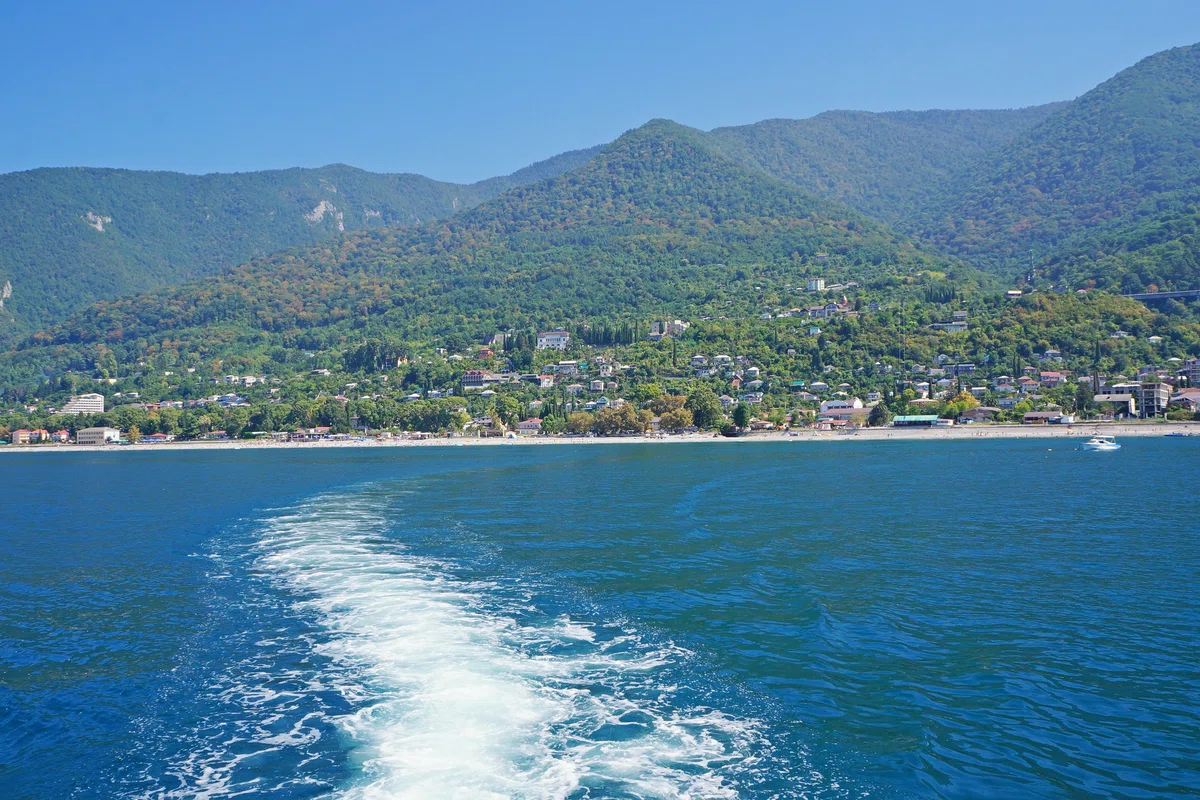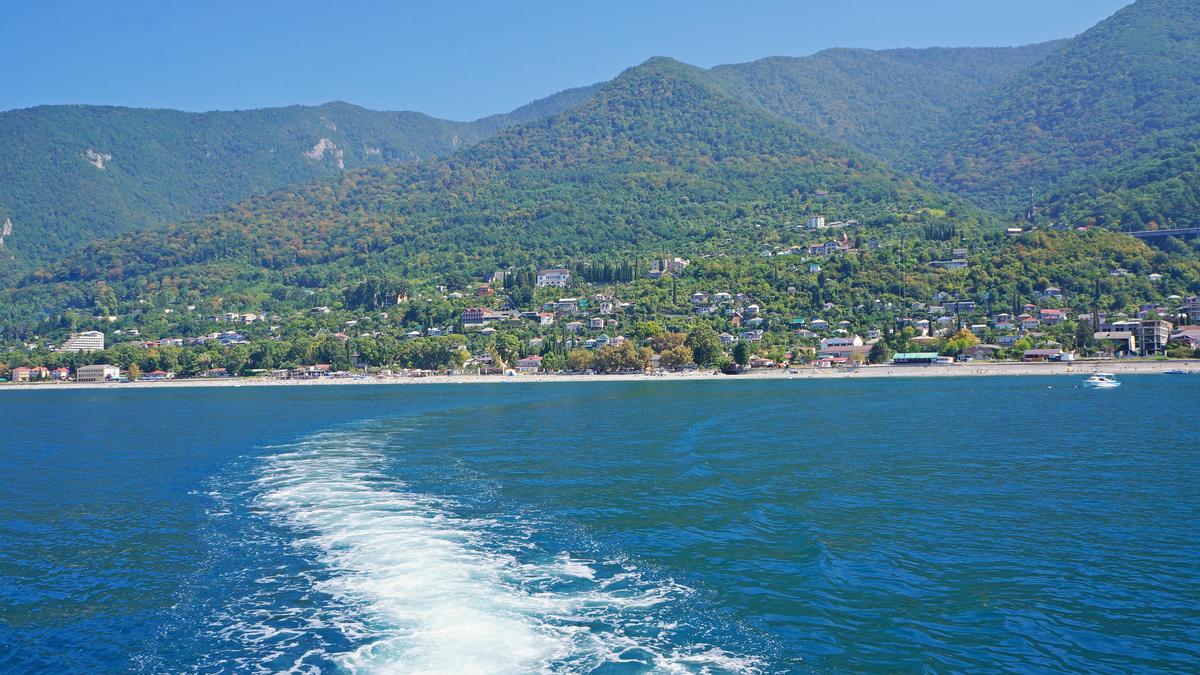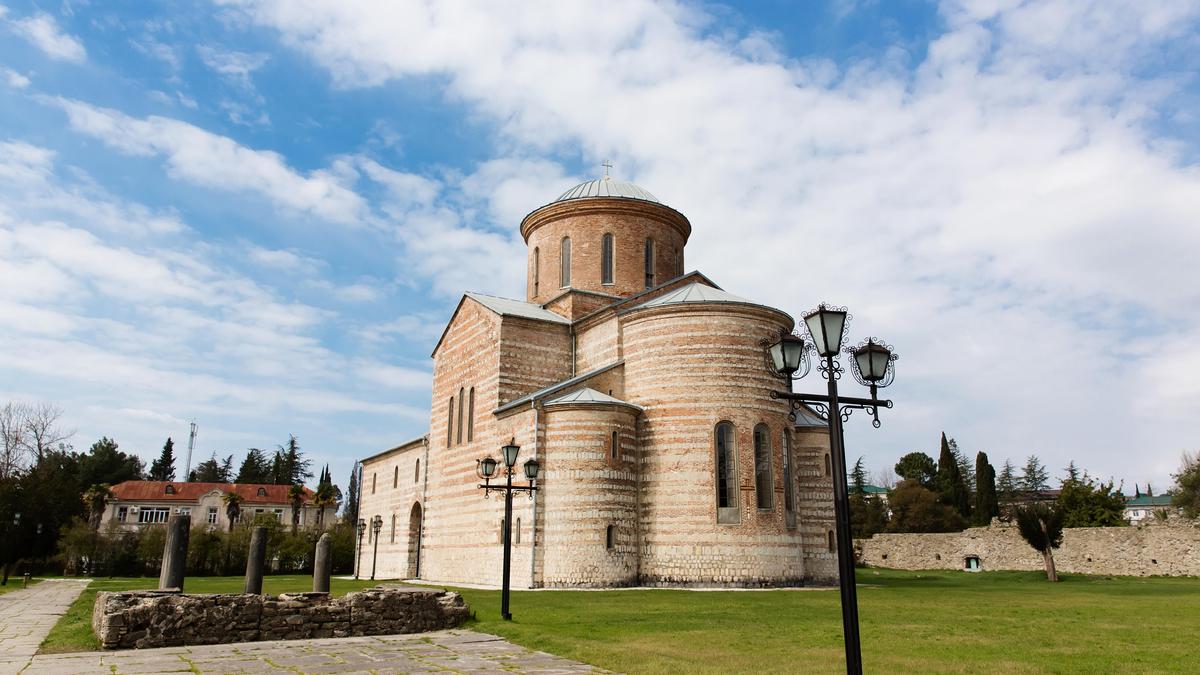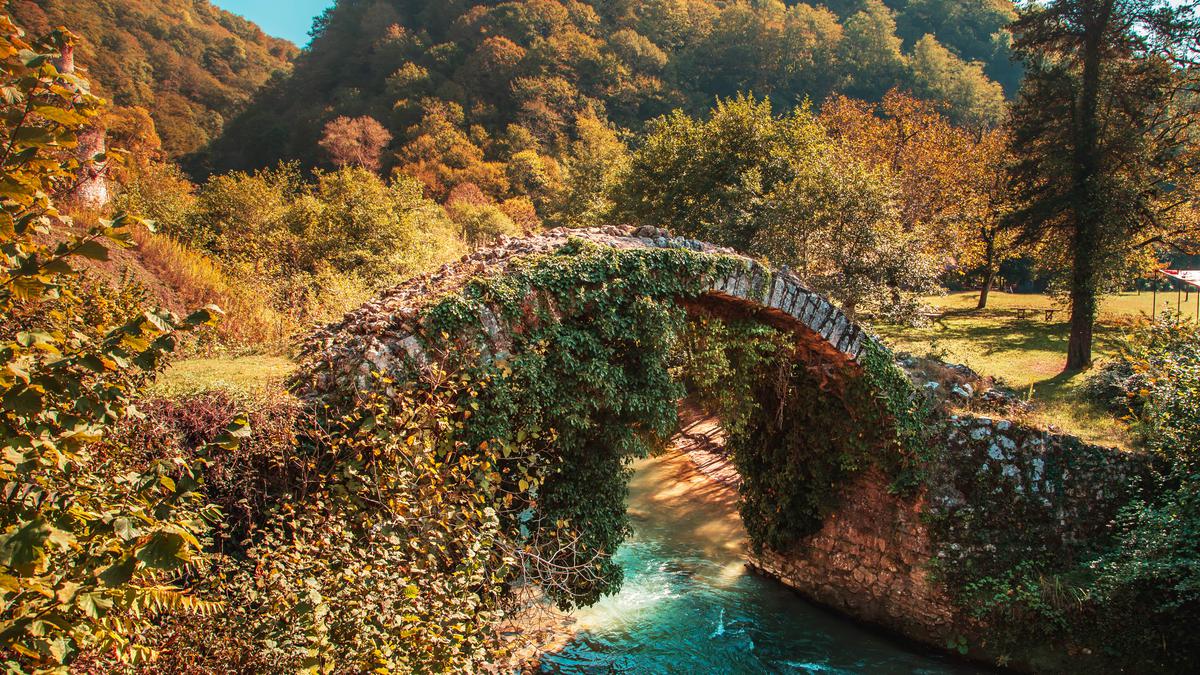
The best historical sights of Abkhazia. Pitsunda and Besletsky Bridge.
Pitsunda at one time was the most important center of Christianity. In the center of Pitsunda there is a large temple of the tenth century. Fragments of a sixteenth-century painting have been preserved in the temple. An arched bridge on the Besletka River has survived to this day, on which inscriptions in the ancient Georgian alphabet are carved.
Pitsunda it is 80 km away. from Sukhumi and 22 km from Gagra, on the territory of Abkhazia, currently occupied by Russia.

Even in the ancient era, there was an urban-type settlement here. The name "Pitsunda" is a translation of the Greek name "Pitiunt" (Pitios - "needles"). A treasure trove of bronze axes and ceramics discovered on the Pitsunda Cape indicates that at the turn of the 11th-I millennia, ancient Kolkho settlements already existed here. Archaeologists have discovered red-lacquer ceramics, numismatic material (coins of the Roman Empire and the city of Trebizond), objects with Latin and Greek inscriptions.
Pitsunda was first mentioned in the writings of the ancient Greek geographer Strabo (in the I century BC) under the name "Great Pitiunt". In the II-III centuries, there was a Roman garrison here, which guarded the empire from the invasions of northern nomadic tribes. As a result of archaeological excavations on the territory of the Pitsunda fortress, baths, a wine cellar (marani), the remains of jewelry and pottery workshops, a sewer system were discovered. There is also a richly decorated three - nave basilica of the IV century . Its mosaic floor has been preserved to this day.
Pitsunda was the most important center of Christianity in the Caucasus. There was an episcopal see here in the IV century, and Bishop Stratophilus was a participant in the I Ecumenical Council (325). In the IX-XVI centuries, the head of the Eastern Georgian church, Catalicos, was in Pitsunda. In the center of Pitsunda there is a large cross-domed temple of the tenth century. After the relocation of the residence of the Abkhazian Patriarchate (the 50s of the XVI century), the Pitsunda monastery was deserted. In the XIX century. the walls of the temple were whitewashed, although fragments of the wall painting of the XVI century have been preserved. According to legend, John Chrysostom, also Andrew the First-Called and Svimon Kananit, whose symbolic graves are located inside the building, are buried in this cathedral.

On the Besletka River, not far from Sukhumi the arched bridge has been preserved, measuring 13m.x4.7m., height - 6 m. Inscriptions in the ancient Georgian alphabet "asomtavruli" are carved on the facing stones of the arched bridge. In medieval Georgia, in order to facilitate trade, by decree of the tsarist rulers, one- or two-span arch bridges were built on rivers, along which caravans transported cargo. These bridges were built of limestone slabs, were lined with hewn blocks. The arch of the bridge rests on piles built on both banks. In order to climb to the elevated part of the arch, the bridge is covered with an earthen embankment on both sides. Such arched bridges are often popularly called "Queen Tamara bridges"
, especially many one- and two-span bridges have been preserved in Southern Georgia, in particular, in Adjara. Most of the stone arch bridges have been preserved on the Ajaristskali, Machakhela and Kintrishi rivers. There are dozens of such bridges in Adjara: Furtio, Tskhemlari, Mahuntseti, Dandalo, Tskhemovani, Kobalauri and other arch bridges. Piles of these bridges have also been preserved in large numbers outside Georgia - in the territories of Shavshet-i-Merkhevi and Lazeti.













47 comments
Log in to leave a comment
А вот Беслетский мост — это не просто архитектурный памятник, а настоящее произведение искусства. Надписи на древнем грузинском алфавите, сохранившиеся на его камнях, добавляют мосту особую атмосферу, словно он рассказывает свою историю. Мне кажется, такие места заставляют задуматься о том, как важно сохранять нашу историю и культуру для будущих поколений.
✅ Положительный момент статьи: Положительным моментом статьи является то, что она рассказывает о богатой истории Пицунды и ее окрестностей. Статья описывает древние поселения, археологические раскопки, римский гарнизон, христианскую историю и архитектуру, включая крестово-купольный храм Х века и арочный мост на реке Беслетка. Это позволяет читателям познакомиться с богатым наследием этого региона и узнать больше о его культурной и исторической значимости. Кроме того, статья напоминает о том, что сохранение и защита культурного наследия являются важными задачами, которые должны быть решены в интересах будущих поколений.
✅ Отрицательный момент статьи: Отрицательным моментом статьи может быть то, что она не упоминает о современном состоянии Пицунды. Также, статья не упоминает о туристическом потенциале Пицунды и возможностях для развития туризма в этом регионе.
Несмотря на положительные и отрицательные моменты статьи, я благодарю автора на каталоге Мадлоба за интересную и полезную статью!!
каждый город наполнен древней историей,интересно узнавать много нового.Статья увлекательная и много информации.Меня не перестает
удивлять тот факт, что в Грузии сохранилось очень много памятников старины.Это похвально, грузинский народ бережно хранит исторические
ценности своей страны. С удовольствием прочитала эту статью и узнала много интересных фактов. Спасибо.
В статье написано, что в результате раскопок, были обнаружены винные погреба, бани, мастерские и даже канализационные системы. Всё это тоже хочется посмотреть. Всегда удивительны и интересны труды человека в древнии времена.